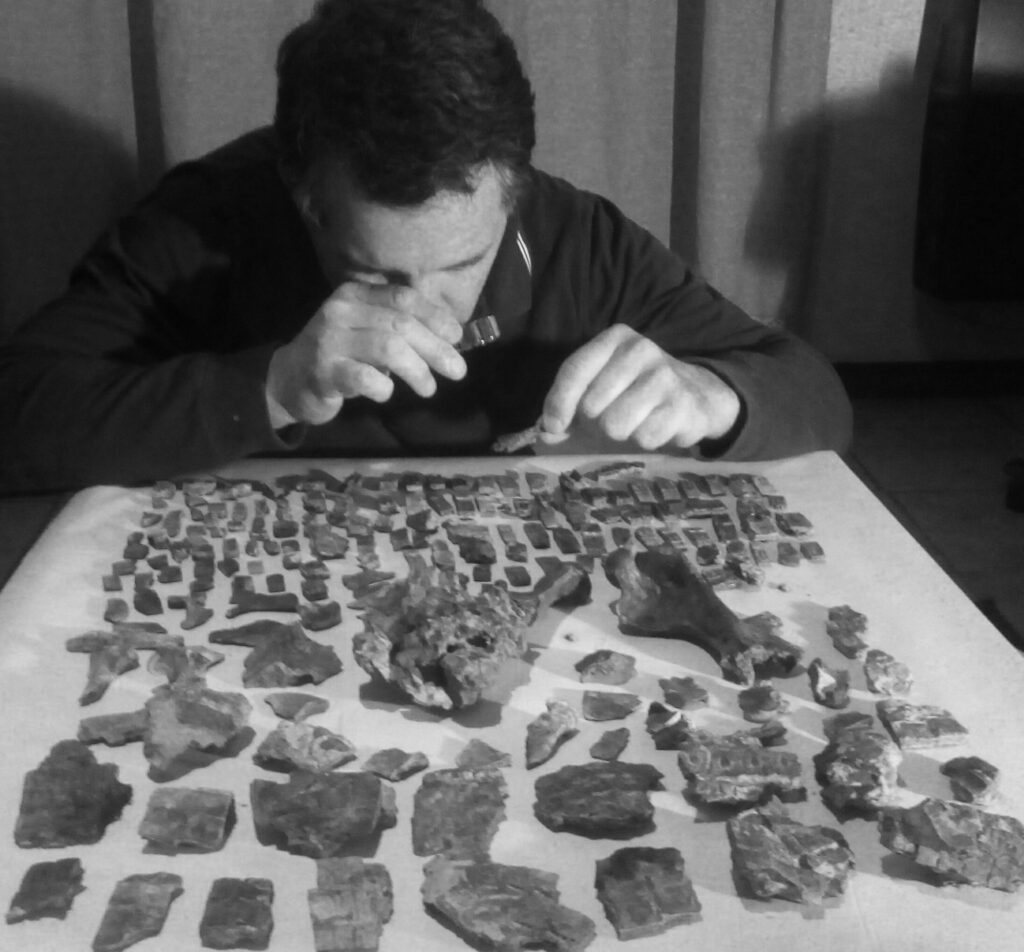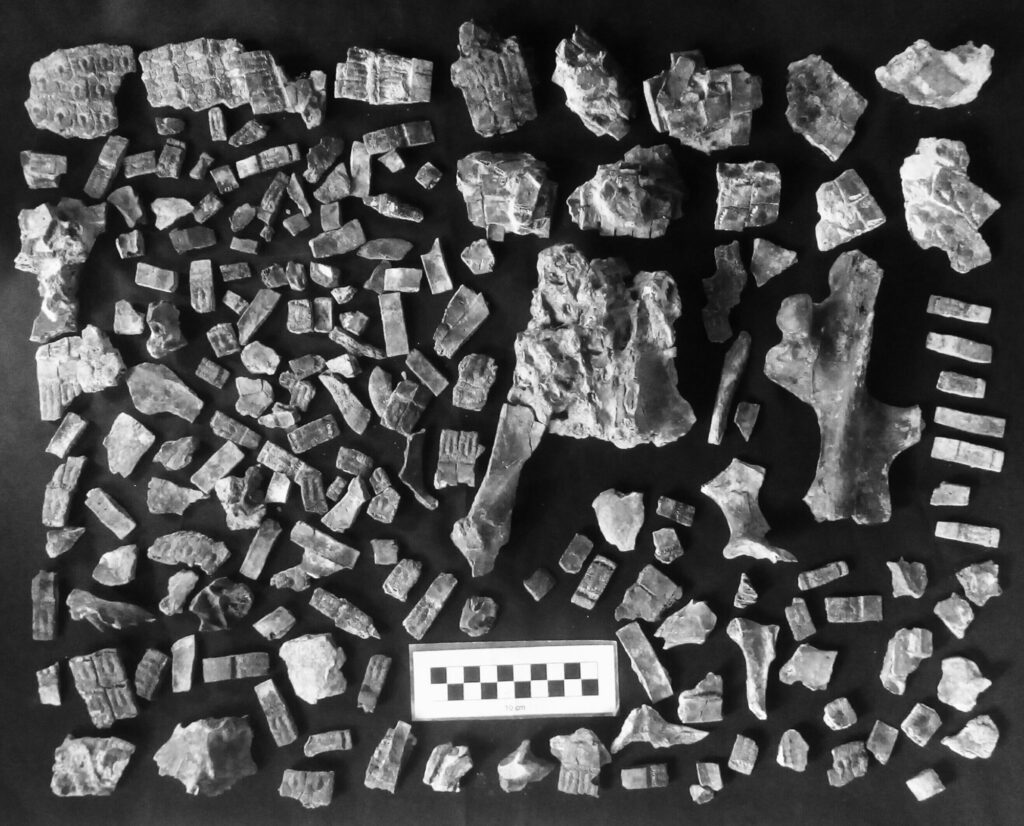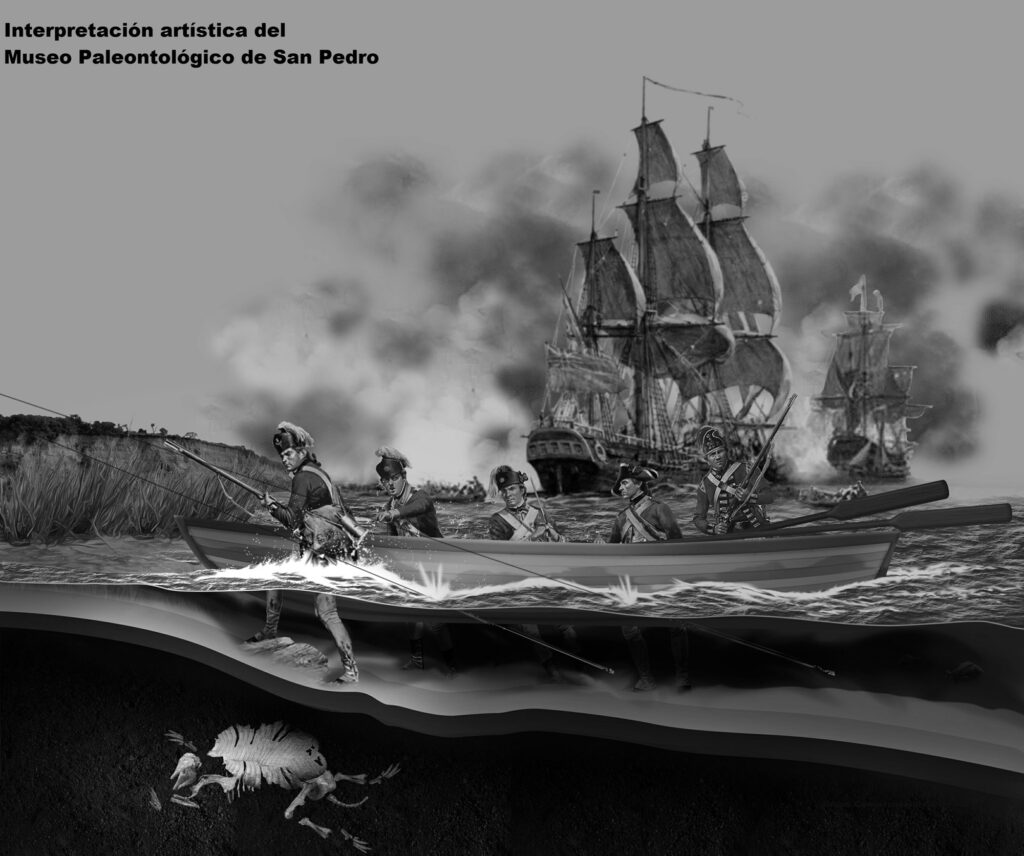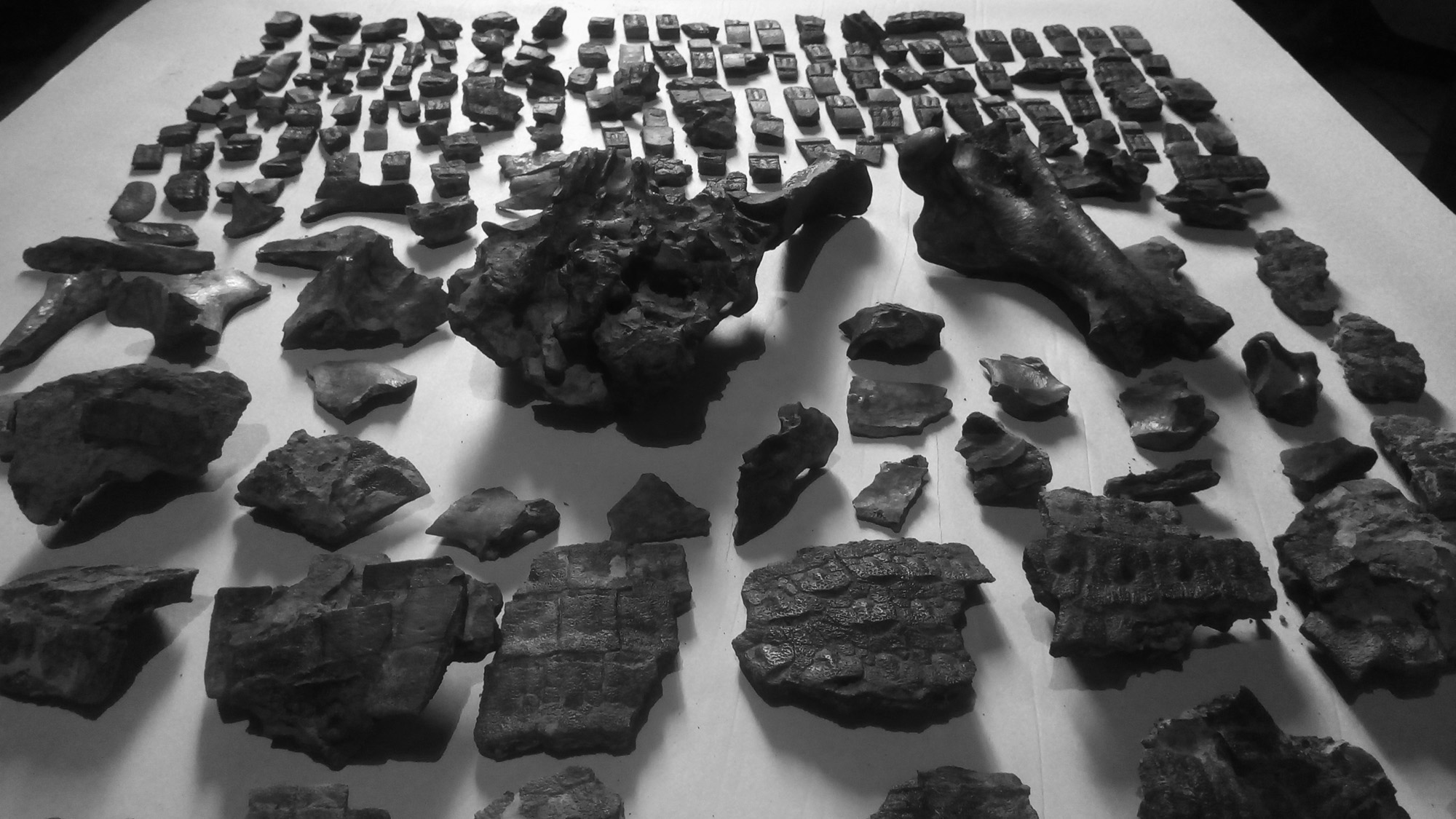Unusually low water levels in a South American river have uncovered remains from a 700,000-year-old extinct armadillo species on the site of a historic battle, when a British fleet attacked Argentinian forces to gain access inland via the Parana River.
The fossils, which included shattered pieces from the now-extinct animal’s shell (cuirass), as well as femur and pelvis bones, were found on the banks of the Parana River, in the northeastern Argentine province of Buenos Aires.
The remains of the species, identified as Eutatus pascuali, were taken to the San Pedro Palaeontological Museum.
The director of the museum, Jose Luis Aguilar, told Newsflash in an exclusive statement: “About 10-12 metres (33-39 feet) deep into the river a swamp would form which trapped slower and larger animals, which is why many remains are found from this time.”

“When part of the sedimentary layer (of the river) is revealed, we have a chance of finding these fossils.”
“We have recovered numerous examples of prehistoric animals such as “Arctotherium (large prehistoric bear), Theriodictis platensis (wild dog), Archaeomylodon sampedrinensis (huge sloths) and Glyptodon munizi (glypodonts).
Aguilar says the museum opened in 1998, since then they have found remains from 35 specimens dating back to the Ensenadense Age, “between two and a half million years ago to about 500,000 years ago.”
Aguilar said: “It is a doubly attractive find, not only does it have palaeontological importance but also the place where the fossils were found was where men disembarked for the ‘Battle of the Vuelta de Obligado’… the troops disembarked in the same place and would have been stepping right over the beast.
“It is very uncommon that a prehistoric animal is found right in the spot of a historic battle.”

The 1845 Battle of the Vuelta de Obligado took place when Argentine military forces resisted the landing of Anglo-French troops.
According to national newspaper, RT researcher Luciano Brambilla said the armadillo they found is very similar to a giant armadillo (Priodontes Maximus), currently the largest living armadillo species.
Brambilla said: “It is very similar to the current tatu cart (giant armadillo); it had more or less the same dimensions and was about a metre (3.2 feet) in length; its hands were very strong and had powerful claws, which is why it is considered to be a burrowing animal.”
Twenty other fossils belonging to this species have been found in the territory, according to Aguilar, but most are very fragmented.
He added that the finding of the femur in this latest discovery, which was preserved practically intact can provide key data about the species, such as weight, speed of movement and other physical characteristics.
Aguilar says they are continuing to analyse the fossils.

To find out more about the author, editor or agency that supplied this story – please click below.
Story By: Lisa-Maria Goertz, Sub-Editor: Joseph Golder, Agency: Newsflash
The Ananova page is created by and dedicated to professional, independent freelance journalists. It is a place for us to showcase our work. When our news is sold to our media partners, we will include the link here.




